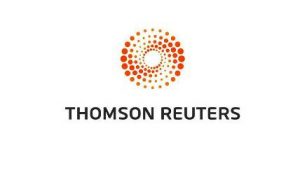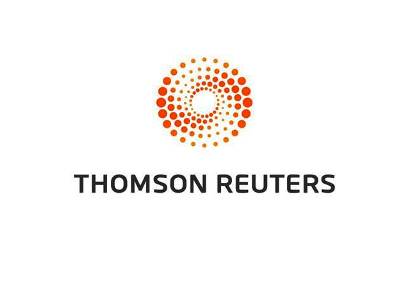 Thomson Reuters (TSX /NYSE: TRI) reported revenues were up 1%, compared to down 1% in the prior-year period. Before currency, revenues were up 2%, compared to up 1% in the prior-year period. Operating profit increased 43%, from $310 million to $444 million. Adjusted EBITDA increased 17%, with the margin increasing 430 basis points to 31.1%. Diluted earnings per share (EPS) was $0.41, an increase of 21%, or $0.07 per share. Adjusted EPS was $0.63, an increase of 37%, or $0.17 per share
Thomson Reuters (TSX /NYSE: TRI) reported revenues were up 1%, compared to down 1% in the prior-year period. Before currency, revenues were up 2%, compared to up 1% in the prior-year period. Operating profit increased 43%, from $310 million to $444 million. Adjusted EBITDA increased 17%, with the margin increasing 430 basis points to 31.1%. Diluted earnings per share (EPS) was $0.41, an increase of 21%, or $0.07 per share. Adjusted EPS was $0.63, an increase of 37%, or $0.17 per share
The company repurchased 6.8 million shares at a cost of $284 million and re-affirmed its 2017 full-year outlook
 “Today’s results demonstrate the progress we continue to make strengthening our business,” said Jim Smith, president and chief executive officer of Thomson Reuters. “It is particularly encouraging to see the investments we have made behind our most promising growth opportunities beginning to shine through on the revenue line. That growth, coupled with savings from our transformation programs, led to a significant improvement in profitability and earnings per share this quarter. We expect those trends to continue as we move through the year.
“Today’s results demonstrate the progress we continue to make strengthening our business,” said Jim Smith, president and chief executive officer of Thomson Reuters. “It is particularly encouraging to see the investments we have made behind our most promising growth opportunities beginning to shine through on the revenue line. That growth, coupled with savings from our transformation programs, led to a significant improvement in profitability and earnings per share this quarter. We expect those trends to continue as we move through the year.
- Revenues increased 1% as higher subscription revenues and contributions from Financial & Risk’s acquisitions were partly offset by the impact of foreign currency and a decline in Financial & Risk’s recoveries revenues.
- Operating profit increased 43% due to higher revenues, lower expenses (which reflected the impact of transformation initiatives to simplify the business) and the favorable timing of certain corporate costs.
- Diluted EPS, which includes discontinued operations, increased 21% to $0.41 as higher operating profit more than offset the loss of earnings from IP & Science following its sale.
- Cash flow from operations, which includes discontinued operations, was negative $368 million in the quarter due to a $500 million pension plan contribution, $86 million of payments related to the fourth-quarter 2016 severance charges, and the loss of cash flow from IP & Science following its sale ($152 million year-on-year variance). In the fourth quarter of 2016, the company incurred $212 million of severance charges. Cash payments associated with the charges did not have a meaningful impact on the company’s cash flow from operations in 2016, as most of the payments are expected to be made in 2017.
Source: Thomson Reuters Earnings Release






















